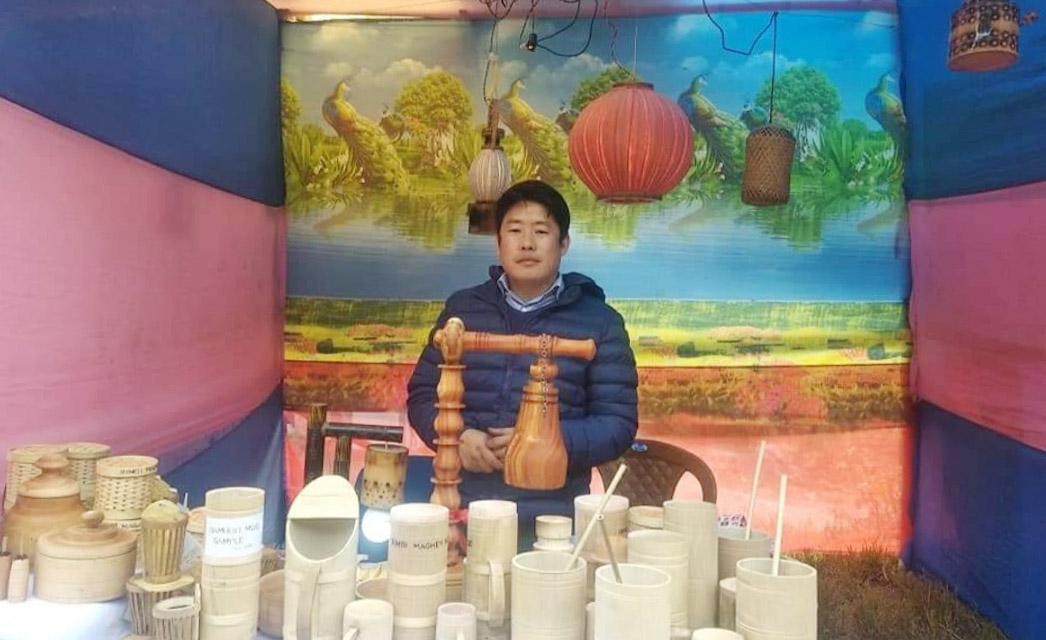
Bamboo has a way of telling myriad stories, through handicraft that artisans create using the material. In the Northeast bamboo defines lifestyle, and a variety of items created from the material including utensils, furniture, baskets and traditional decorative pieces can be found in almost every home. When it comes to bamboo handicraft, each state in the Northeast has its stories to tell.
For Sikkimese artisan Indra Kari Subba, the need to promote bamboo handicraft is more than just about loving the art form. Subba’s desire to preserve and safeguard the dying culture and traditions of different Sikkimese communities through bamboo and wood handicrafts led him to establish Khechuperi Bamboo House in 2016. In less than a decade, the enterprise has emerged as one of the leading bamboo and wood handicraft outlets in the state, producing more than 60 types of traditional Sikkimese souvenirs, the ‘dhungro’ (a beverage container), key chains, utensils, furniture and more.
Many of the items they produce date back to several decades or were long lost. One such item, for instance, is the ‘theki’ (a curd container) of the Chettri-Bahun communities, used during the ceremony of asking a daughter’s hand in marriage. Other items include the ‘pong’, which is used by the Gurung and Limboo communities to store local alcoholic beverages or milk.
“We are focusing on souvenir items because souvenirs in Sikkim are mostly Chinese products with ‘Made in Sikkim’ stickers or tags pasted on them. Khechuperi Bamboo House is one of the leading traditional bamboo and wood handicraft producers in Sikkim. Tourists love these and so do the locals,” said Subba.
Thirty-seven-year-old Subba hails from Thingling in West Sikkim. An alumnus of Pelling Senior Secondary School, he completed his Bachelors in Humanities from North Bengal University and Masters in English from Indira Gandhi National Open University (IGNOU). He is a government employee at the HRD department on an ad-hoc basis. With six staff members, Subba has set up a mini store in Thingling.
In an exclusive interview, Subba talks to The NorthEast Stories about his love for bamboo and wood handicraft, and the various challenges he faced in order to turn Khechuperi Bamboo House into a success story.
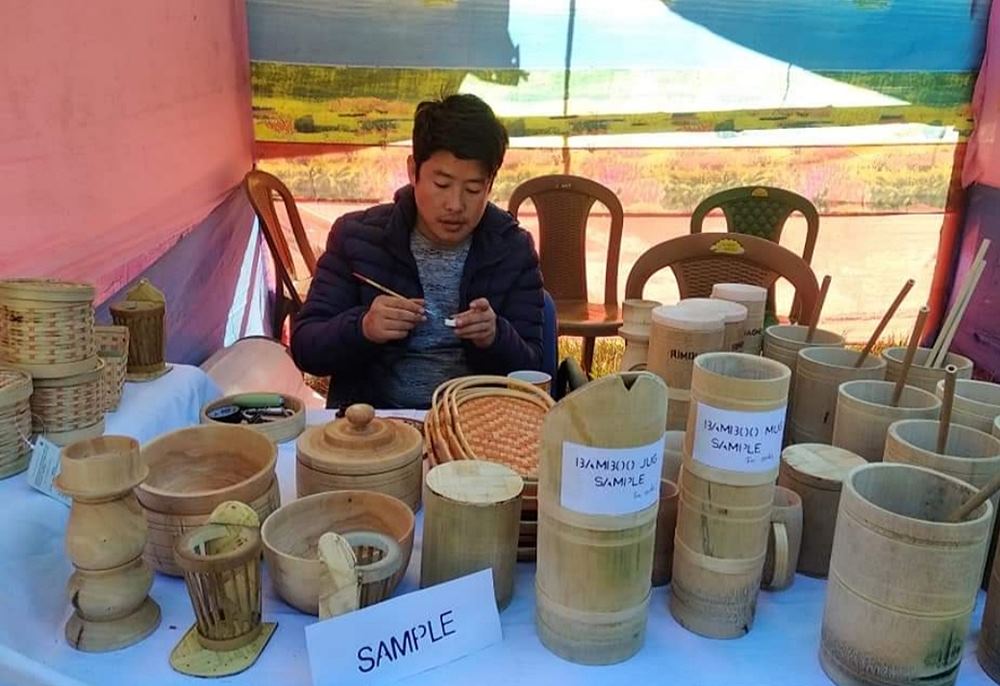
What made you establish Khechuperi Bamboo House?
Indra Kari Subba: For decades, Sikkim has set a culture where parents want their wards to opt for government jobs after they complete their education. We want to encourage the youth to promote local entrepreneurship in Sikkim and understand that they can earn a livelihood through entrepreneurship.
Khechuperi, since its establishment, has occasionally been conducting short-term training programmes for the youth, the homemakers and self-help groups (SHGs) in groups of 30-35. In 2019, we conducted training in collaboration with the state government that saw the participation of more than 60 people. Through such training, we want the youth to understand that one can establish a sustainable business with limited resources, where one can have a constant running business in the long run. Our mission is to bring out the most skilled artisans.
How were you drawn to the world of bamboo and wood handicraft?
I was always fascinated with the texture of bamboo and wood, and I wanted to design and produce unique products out of bamboo. That was what inspired me.
In 2014, I enrolled for a short-term training programme conducted by the forest department. After the training, I came to the realisation that the concerned departments of the state government conduct various training and workshops, but after the training is completed, there is no follow-up. Due to this, skilled trainees don’t get the scope to move ahead with what they have learnt. They don’t know the basics of production and where to sell their products. At Khechuperi, we train them and also provide employment opportunities for such trainees.
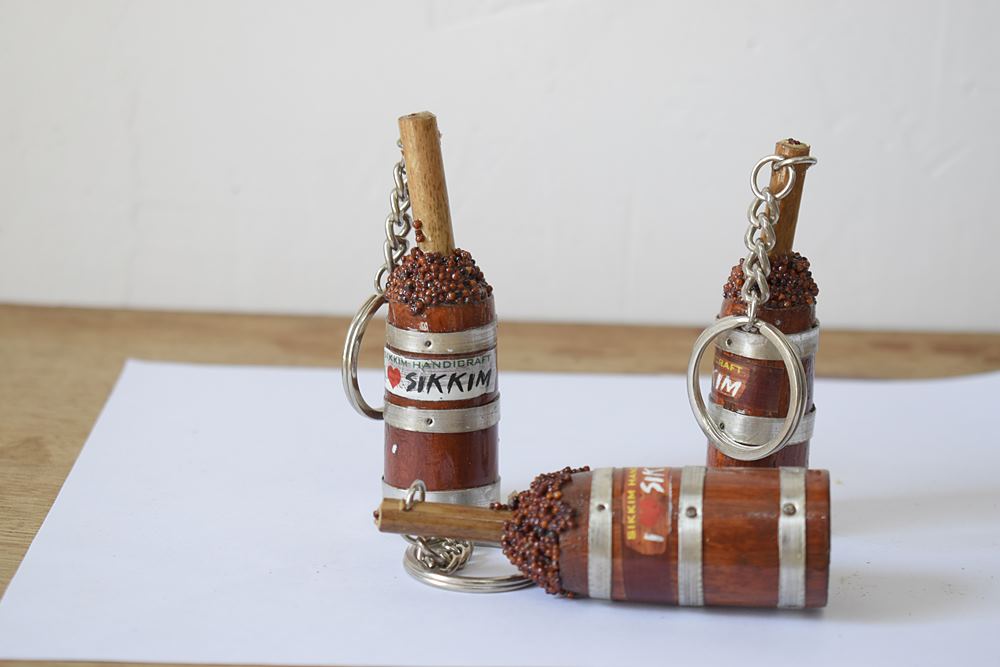
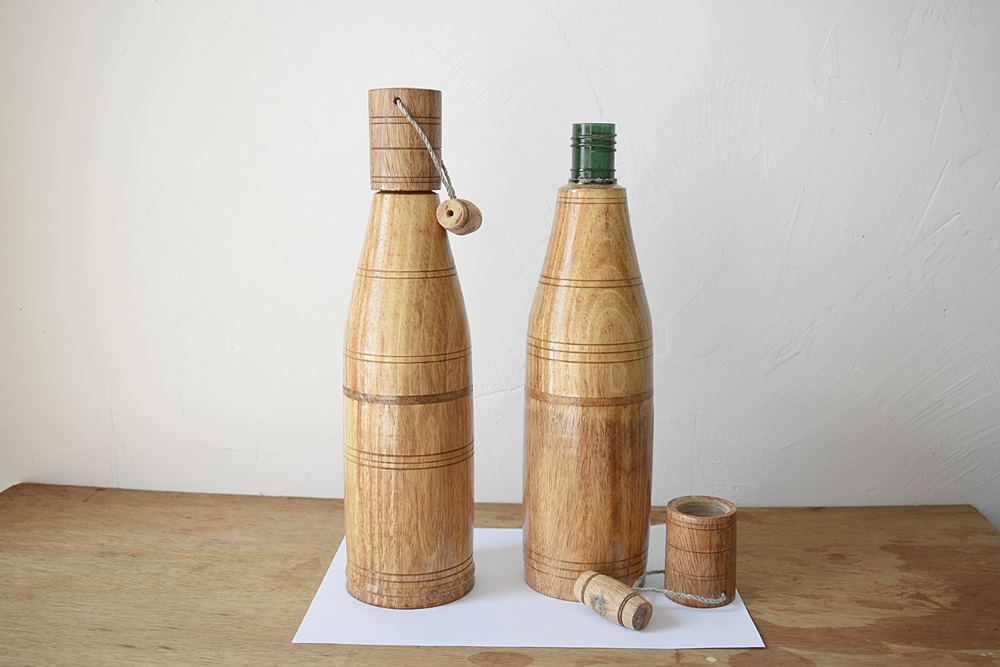
Where do you source the raw material from?
All the raw material used is local, and the bamboo is grown in our farms here. I noticed that bamboo in villages was only being used to make fences, construct pigsties and chicken coops, or as support for vegetation. Why wasn’t it being used for business purposes? Since bamboo is readily available in our neighbourhood, we didn’t have to import from outside Sikkim, which made it easier and cheaper. This was one of the reasons that encouraged me to establish Khechuperi Bamboo House.
What is the market viability like?
We mostly get orders via Khechuperi. Online companies such as Amazon and Flipkart want to sell our products but we are unable to do so right now as GST registration is still in the process. We get orders of food packaging items mostly from homestays in Pelling and Darap, West Sikkim. We have participated in various exhibitions and festivals in Sikkim, Bihar, Delhi etc.
The state government recently placed an order of 800 bamboo lamp sets. At the Rimbi Maghey Mela recently, we got an opportunity to produce eco-friendly trophies and medals made of bamboo and wood. It was an initiative of Ms Yishey D. Yongda, District Collector Gyalshing.
Tell us about being your products being selected for the G20 meet
With the support of Sikkim Entrepreneurship and Economic Development (SEED) Cell, we were selected for the G20 meet this year. Three products — tongba keychains, bamboo incense containers and wood bamboo tea cups — were selected for G20. The Centre sent us a list of products, and these three products were confirmed. These were displayed at the recent G20 meet in Delhi.
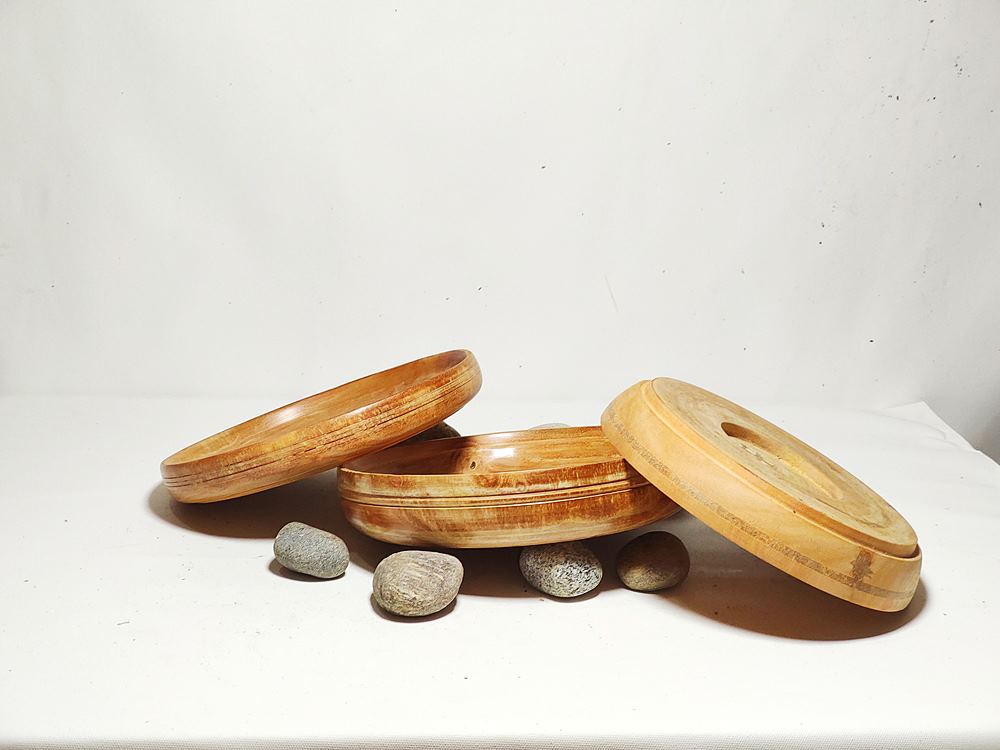
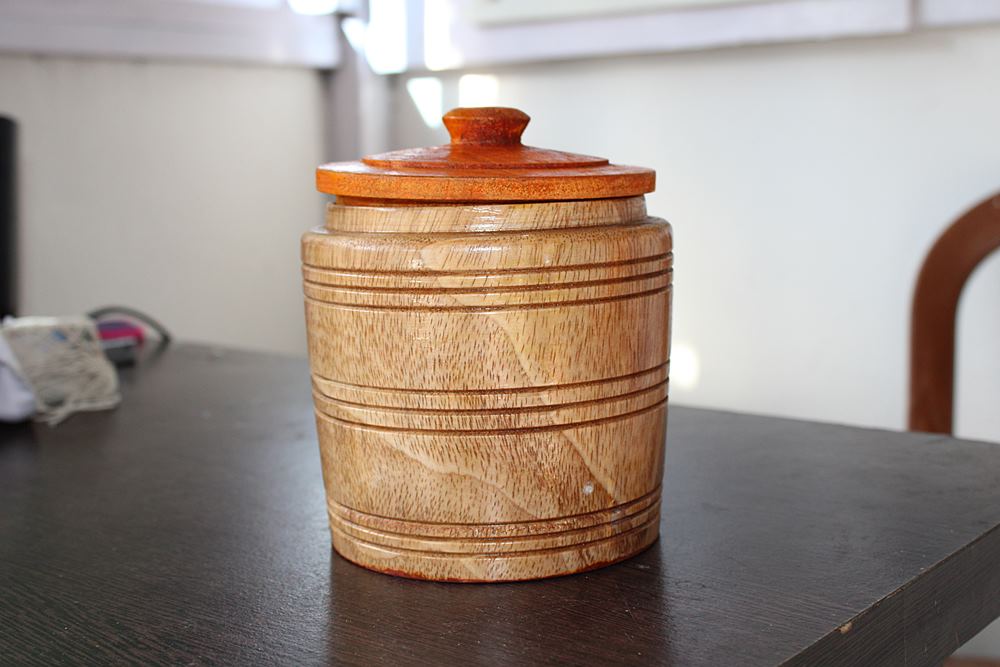
What kind of support have you received?
We have been receiving support from SISCO and IDBI banks in terms of loans for machinery, besides subsidy from the Bamboo Mission. We imported four bamboo turning machines from the UK, each machine costing over two lakh rupees. We are getting help from the state government through the SEED Cell initiative. The machines are expensive and need a lot of investment. Most of us come from humble backgrounds. We want the state government’s supervision so that the machines can be provided by the government. The bamboo in Assam is of better quality and if our state government supports us we could plant Assamese bamboo in our farms.
What are the main challenges you face?
When we started out, marketing was an issue and machines were expensive. Treating bamboo was also a challenge owing to the ban on chemicals in Sikkim. We still use traditional methods, which is time-consuming. The Covid pandemic hampered business, too, as marketing products became difficult at that time.

